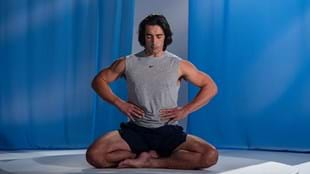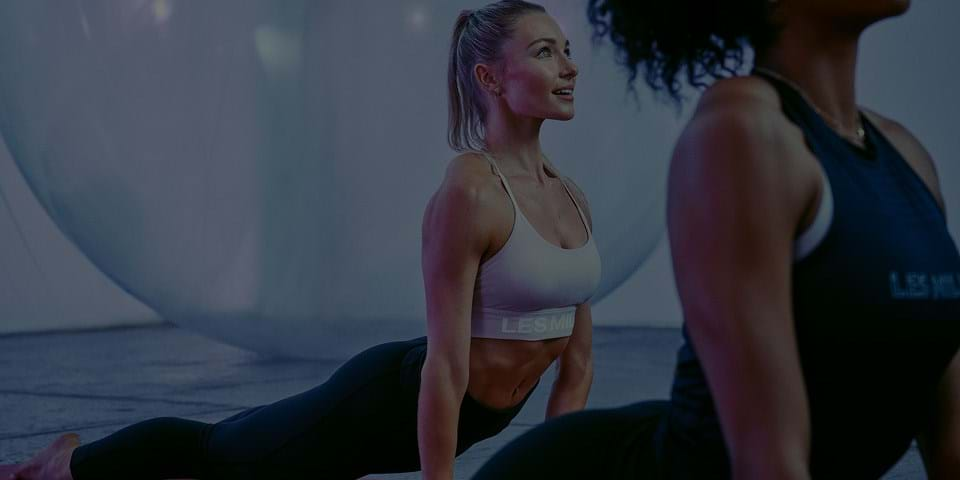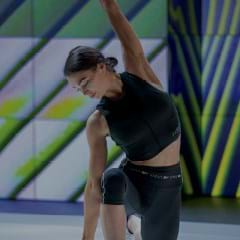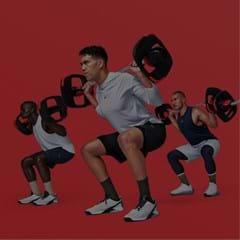Read on and you’ll discover:
- Why breathing is the epicenter of human function
- How breath training can ease stress and tension
- How breath training can boost fitness and athletic performance
- Top tips for introducing breath training into your life
- Why this ancient forgotten practice is primed to become part of everyday life.
Six weeks ago I thought breath training was slightly hippy, slightly crazy, and basically just intense sessions of huffing and puffing. It was not my cup of tea. But that was before I met Fraser Beck. After just one 30-minute introductory breathwork session and a quick chat with this holistic health guru, my interest in breath training has been seriously piqued. Here’s what he had to say …
What is breathwork?
“I like to call it breath training because it really is a form of exercise. It’s all about training the diaphragm, which is the center of the human organism. Breathing controls and regulates every biological process in the body, so the diaphragm really is the most important musculotendinous unit to train. For a long time, the majority of people training the physical body have been focused on external aesthetic, as opposed to the true functionality of their bodies.
Breathing is the epicenter of human function … Breathing controls and regulates every biological process in the body, so the diaphragm really is the most important musculotendinous unit to train.
There are many different ways to train the breath. They can sound and look a bit unorthodox and weird, but it is a very ancient and effective practice. I believe that within the next 3-5 years, breathing will be much more institutionalized within every aspect of our society. Our breath is the epicenter of our physical, mental/emotional, social and spiritual health, it really does affect every dimension of our being, so it makes sense to pay more attention to it.”
You were just 13 when you discovered the power of your own breath?
“I was diagnosed with a degenerative spinal disorder called Scheuermann's Disease at 13. It sucked. I googled it and all I could see were all sorts of Hunchback of Notre Dame kind of images, which was awful. But the hardest part was how it affected my sports performance; rugby and basketball. I already had my eye on becoming a professional athlete. I knew I had the will to win, but unfortunately, as much as I trained, the anatomical position of my spine was letting me down. I was training and doing my best to get better, but biomechanically I was already at a loss.
My musculoskeletal specialist gave me a few breathing exercises to practice that related to developmental kinesiology (which is how we as infants naturally learn to breathe and move). All of a sudden, after ten months of being in relatively severe back pain, the pain stopped and I was very clear mentally. I was still quite young so I didn't fully understand, but the awareness and the clarity of mind that I experienced once I started breathing more efficiently was amazing. And with the physical back pain gone I could keep playing the sports I loved.”
But it wasn't until later in your teens that breath training became part of your daily life?
"I was really into basketball, on the fringe of playing semi-professional in New Zealand, and that was my goal. And then I ruptured my ACL and it just flipped everything upside down. It got me questioning my purpose. And I got obsessed with physiology. I started focusing on how do you align and stabilize the ankle, the knee and the hip? Then how does that relate to a neutral, optimal posture of the spine? And finally, how does that relate to the pressure you create with a full breath? That's when I became fascinated with breathing. I also started exploring the science of fascia (connective tissue) which I believe, together with breathing, will lead to a paradigm shift within the current biochemical-pharmaceutical medical model.”
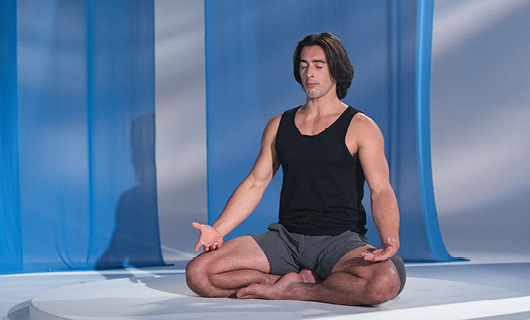
How did you get started?
“I began just focusing on what I could feel. Exploring how much I could exhale, and then focusing on how I could control and manipulate different parts of my breath. Trying to train a breath-hold after full exhalation to become more physiologically efficient. Now, I generally start each morning with 10-15 minutes of focused breath. I'll play around with just taking some full breaths, maybe in and out of the nose, maybe in and out the mouth, just practicing gaining that interoceptive awareness, which is your ability to sense and understand what is happening on the inside of your body.”
So what changes once you have increased awareness of your breath?
“There’s nothing that breathing doesn't affect! Breathing controls your sleep quality, your ability to digest, it controls circulation, posture, motivation, strength and mobility … it is everything. By learning how to fully expand and compress the body, we ensure that energy in the body can continue to flow. And that is the essence that maintains your life force and can help prevent chronic disease.”
One of the biggest benefits of cultivating a regular breath practice is that we learn how to balance our nervous system, which helps us regulate every other vital function in the body.
Does breathwork reduce stress and tension?
"Absolutely! One of the biggest benefits of cultivating a regular breath practice is that we learn how to balance our nervous system, which helps us regulate every other vital function in the body. When we become overly stressed or tense, the sympathetic branch of our autonomic nervous system is turned on. Contrastingly, when we’re in a state of rest, relaxation and digestion, it’s our parasympathetic nervous system that is activated.
The vagus nerve is the longest in the autonomic nervous system, connecting the brain to the heart, lungs and gut (microbiome). When we take long exhalations we strengthen or tone the vagus nerve. This strengthening also happens when we laugh, hum, meditate, and experience love and joy.
Breath training also affects the tension and electrical resistance (ohms) of your skin, this is known as your basal skin resistance (or electrodermal activity, or galvanic skin response), and it's basically a measure of how stressed you are. Imagine you have a needle and you’re going to pierce it through the skin. If someone is really stressed and tired, the tension in every layer of their body is going to be hard to go through. With continued breath practice, you start to decrease this basal skin resistance – you decrease the tension in the body. And when you get this deep relaxation through every layer of your body, it allows your neurology to work more optimally.”
You say breath training creates more efficient physiology?
“When you hold your breath, you're putting yourself in the position where your body has a lack of oxygen, and then that creates an adaptation within the molecular cellular component of your body. It is effectively training carbon dioxide tolerance. Over time you start to get more efficient at using the oxygen you have. And, as we learn to take a full breath, we learn what fully relaxing every layer of connective tissue (fascia) in the body feels like. It presents a beautiful yin-yang duality within the practice of breathing. I always say, any muscle you can’t consciously relax is just as good as any muscle you can’t consciously contract.”
It makes your diaphragm bigger, stronger and more endurant. This allows you to be biomechanically more efficient when you run, jump or lift.
How can breath training promote athletic performance?
“The diaphragm is 70 percent connective tissue and 30 percent muscle. Many people realize that breathing is important and the diaphragm is our main apparatus of respiration, however, the diaphragm is also a dynamic musculoskeletal stabilizer of the entire body system. When you learn to fully inhale it makes your diaphragm bigger, stronger and more endurant. This allows you to be biomechanically more efficient when you run, jump or lift.
And vice versa, your ability to fully exhale to maximal compression relates to nerve conduction, so you can develop more interoceptive awareness, you can move faster and more efficiently.
I do everything from yoga to powerlifting, snowboarding and basketball, and breathing is the real game-changer across them all. Recently, I stopped doing yoga for about five months and focused on more intensive breathwork. When I got back into the yoga room, I was able to get into postures that I'd never done before. The breathwork made it happen.”
Is it true that the more you breathe in, the more potential you have to be fitter?
"Yes, but it is contextual! Breathing and fitness are interconnected, but they are their own things. Someone could be really fit, but not that efficient of a breather. But if someone is an efficient breather it can really help promote their fitness.
The volume of breath that you breathe in and out at rest can be different from individual to individual. Some might inhale and exhale 500mls of oxygen, but for others, it might be just 250mls. Although that seems quite small, if we do it 25,000 times a day it adds up. And that person who breathes in more has a basal metabolism that's much higher than the one who is shallow breathing.
Eighty percent of your fat metabolism is dependent on how much carbon dioxide you’re exhaling. So when you’re doing an intense workout and you think you’re losing weight because you’re sweating, it’s actually because you’re breathing it out.”
Someone could be really fit, but not that efficient of a breather. But if someone is an efficient breather it can really help promote their fitness.
Read more about how fat leaves your body via your lungs here.
With so many breath techniques and options to choose from, what’s your top tip for someone just starting out?
“Just be curious. Treat it as a fun exploration of your body and find out what your body is capable of. Some breathwork can be quite intensive, where people are breathing intensively to create an out-of-body experience. While this does have its place, you don’t necessarily have to do that. Just doing a small 10- to 15-minute practice where you take some time to slow your mind and connect with what you feel is enough. Do it regularly and it is going to really add up and the benefits will compound in the long term.”
When should you do breathwork?
“The best thing about breathing is that you can do it any time, and the more you connect to your breath consciously the better. You could start with energizing breathing sessions in the morning and do more depressurizing, relaxing techniques in the evening. But there is no right or wrong, just do whatever works for you.”
What do you say to someone who is still not sold on the idea of breath training?
"Be open-minded and curious enough to try it. It just makes sense. Breathing is the epicenter of human function and influences every dimension of our health and Hauora (which is the Maori conceptualization of health and wellbeing in four dimensions; physical, mental/emotional, social, spiritual). Interestingly, in Latin, spiritus, where the word spirit comes from, means breath. So you are breathing your spirit into your body.
I believe that science will soon recognize the spiritual benefits and the Western pharmaceutical medical paradigm will shift – breath work will become a big feature in the future of medicine.”
To learn more from Fraser try the new breathwork sessions available on LES MILLS™ On Demand. You can explore breath techniques to increase energy vitality and inner power, to create clarity of mind, to shift anxiety, to promote sleep, and so much more.
explore les mills wellness ON DEMAND



